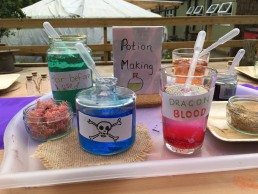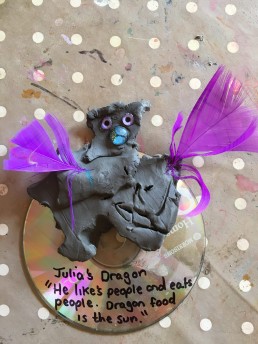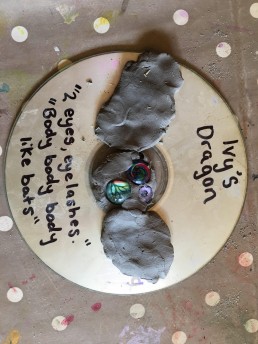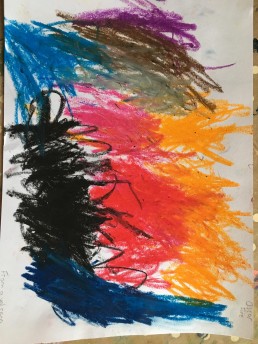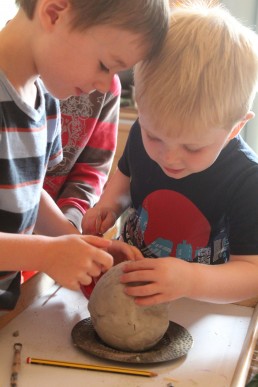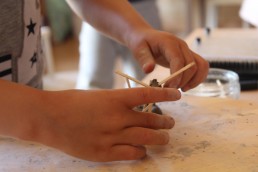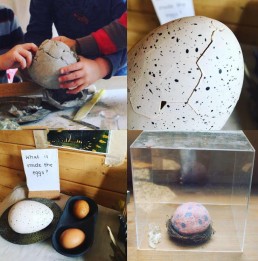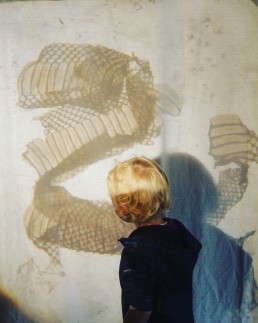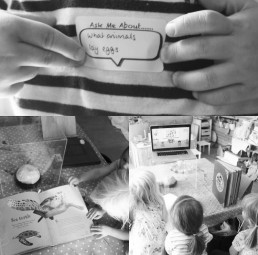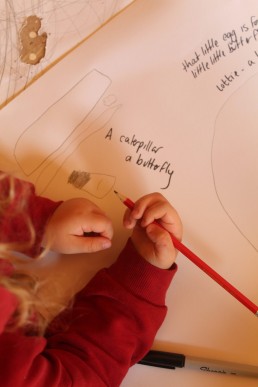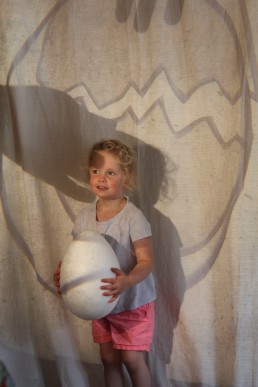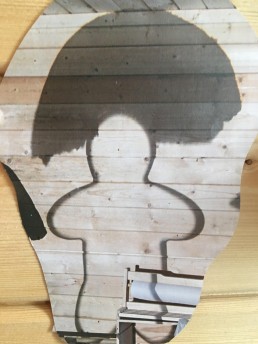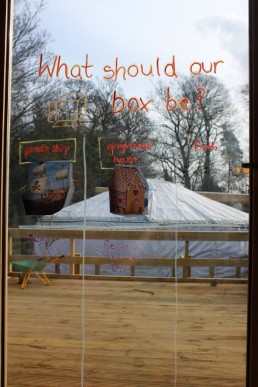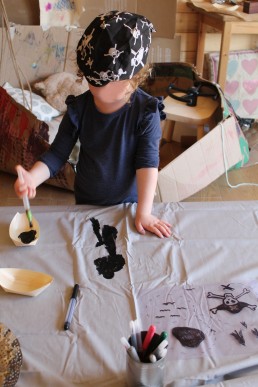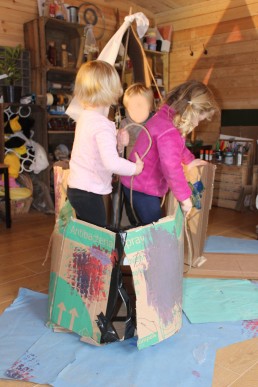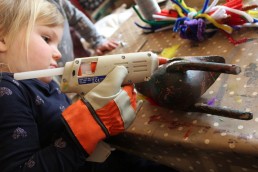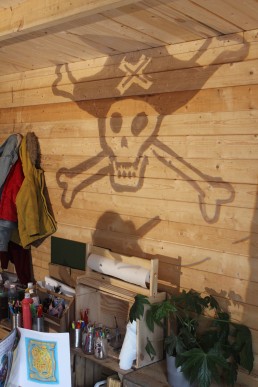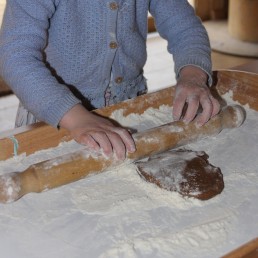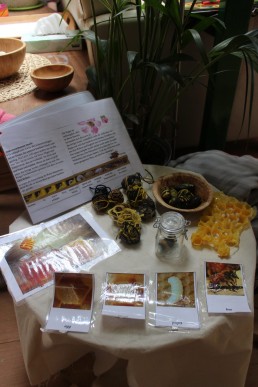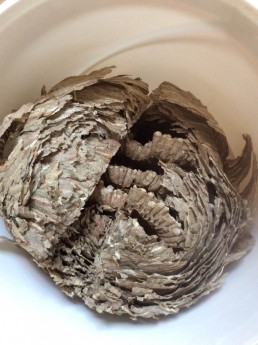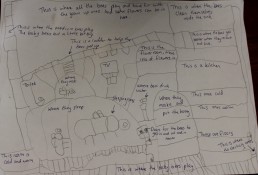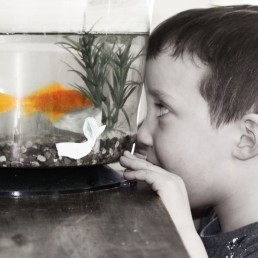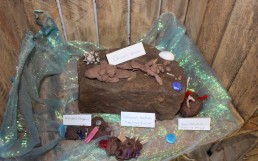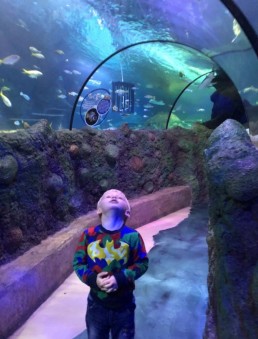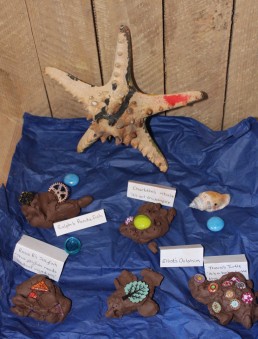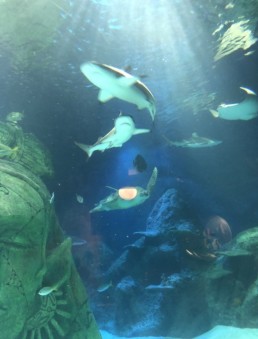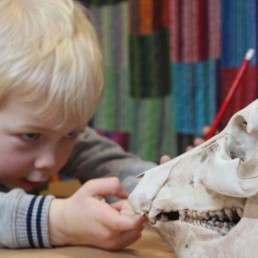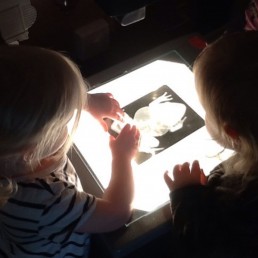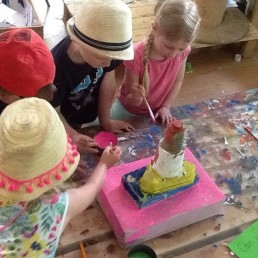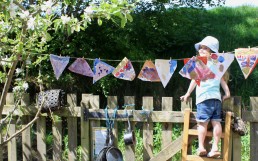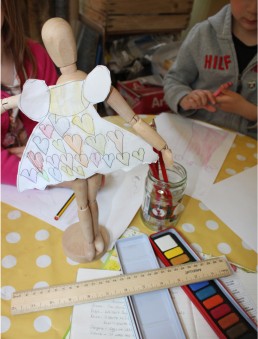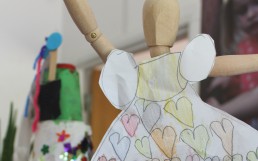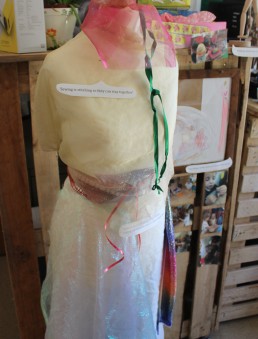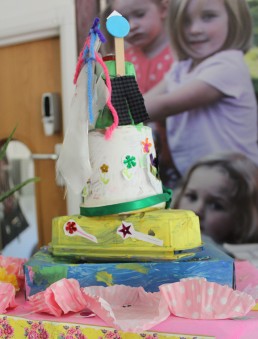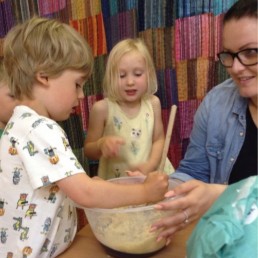Projects develop through close observation of children’s interests and based on their responses, our professionals introduce materials, questions, and opportunities that provoke children to further explore the topic. While some of these teacher provocations are anticipated, projects often move in unanticipated directions as a result of problems children identify. children are given opportunities to make connections between prior and new knowledge while engaging in authentic tasks.
Dragons
During forest school one afternoon the children noticed a large section of a tree lying on the ground, they sat on it and incorporated it into a game. This piece of tree became a Dragon and we brought it back to nursery. The children became increasingly interested in dragons, their origin, colour, if they were friendly or angry. The breathing fire aspect lead us too an experiment where we had our own fire to observe the colours, and re create it by melting crayons. After a dragon egg was found in the woods the children decided they must create a magic potion to see what was inside. The Dragon project is displayed and explained in detail in the main reception currently, and lasted for around 6 months.
Eggs
After learning that Dragons come from eggs the children started predicting what other animals start in eggs, which lead to some research from books and computers. We had some chick eggs and watched them develop. This interest lead them to still life observational drawings of a range of eggs, research based learning, discussions and acting out life in an egg and the hatching process. The book 'An egg is quiet' supported their interest whilst showing the children the vast range of eggs from ladybirds, chicks to dragons!
Gingerbread and Pirates
The children worked together to build their own pirate ship taking over the art studio, they incorporated this into their pirate role play games and built upon relationships. They even turned the outdoor classroom into a pirate ship, with sheets for sails, and used compass' incorporation directional language and maths. They crested their own treasure maps, and we followed a real map to locate treasure in the woods during forest school.
bees
Inspired by the nature around them, our children developed an interest in bees which we went on to explore. We looked at their hives and the sounds bees made as well as designing our own hives and using 3D pens to create them. We also enjoyed a trip to Horsforth Library and tasted honey for ourselves. We then consolidated our learning by making a large bee collage using fabrics and other materials onto a wooden panel.
fish
2017 - a fascination began with the question 'do star fish have bones'? We compared all types of marine life, had a trip to the Sea life Centre and purchased a pet Gold fish for the classroom. They used watercolours to create a still life representation from a real fish before dissecting it and cooking it.
dinosaurs, bones & eggs
Following on from the fish dissection bones became a curiosity. We compared the skeleton of animals and humans, sparking the question 'what starts life in an egg?'. We had chick eggs in an incubator, had a trip to the local library and participated in dinosaur related excavation and palaeontology activities. We used salt dough to re-create our own fossils before bone-by-bone creating our very own dinosaur sculpture using clay, wire, Papier-mâché and cardboard.
